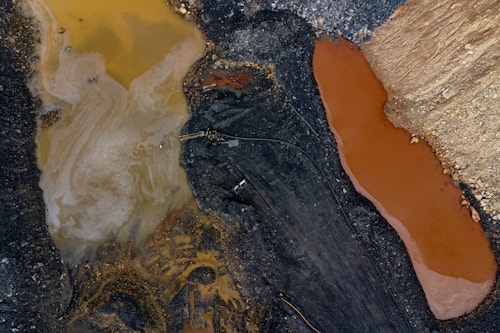Even if early mines were documented in ancient China and the Roman Empire, the modern history of coal begun 250 years ago, at the beginning of the Industrial Revolution, when some British inventors discovered it could be used to heat water, make steam and spin turbines to power machines. It was a cost-effective substitute for wood, delivering more energy when burned. Since then, coal has become an indispensable resource, widely used for power generation, residential heating and to produce the concrete and steel our lives are built around.
But coal is way more ancient than that. Its origins date from millions of years ago, back when carbon-rich plants died in swamps and over time the combined action of pressure and heat turned them into black and shiny rocks packed with energy.
These altered remains of prehistoric vegetation come in various forms, each with its own unique traits, composition and energy density. From peat and lignite to sub-bituminous, bituminous and anthracite: coal is ranked according to its evolution over time and, therefore, its carbon content. The deeper the coal seam, the longer it took it to form, the higher its purity and rank. This is due because at deeper depths the material encounters greater temperatures and pressures, and more plant debris is transformed into carbonaceous structures. Therefore, the older the coal, the higher its quality.
Peat is coal in its youthful stage of formation, it is the precursor of coal, an accumulation of partly decayed vegetation that has gone through a small amount of carbonization - a process that takes place under incredible heat and pressure - but can eventually transform into coal under the right circumstances. Next in line, at the lowest rank of the coal’s family, there is lignite, a crumbly brown rock presenting low amounts of carbon (50-60 %) and therefore little energy. Sub-bituminous follows, which is coal in its intermediary state, showing a balance between energy and purity (60-70%).
Bituminous comes after, the backbone of the coal family and, formed under more heat and pressure, it contains 70 to 90% carbon, which makes it a popular choice for industrial use. Anthracite, the premium coal, boasts the highest carbon content (up to 97%) and energy density and burns cleanly. In fact, the higher is the quality the cleaner the combustion, the fewer the emissions. And eventually graphite, the result of the final stage of carbonization and an allotrope of carbon, namely a substance consisting solely of carbon atoms, that can be found in pencils and is commonly used in lithium-ion batteries thanks to its great conductivity properties.
Read the full article on Energy Observer website.


